Hikers and mountaineers stumble upon mysterious, ancient objects in the Swiss Alps. Their discoveries keep archaeologists busy.
From the Iron Age through ancient Rome and the Middle Ages, people traveled over the icy mountain passes of the Alps with cows, mules, oil, wine, skis, weapons and much more.
Their lost or abandoned possessions are now coming to light as the glaciers melt from the mountains, giving us insight into past civilizations and eras.
Archaeologists gave Business Insider a glimpse into some of their most mysterious and revealing discoveries.
Melting glaciers in the Swiss Alps are exposing artifacts left behind by humans over the centuries.
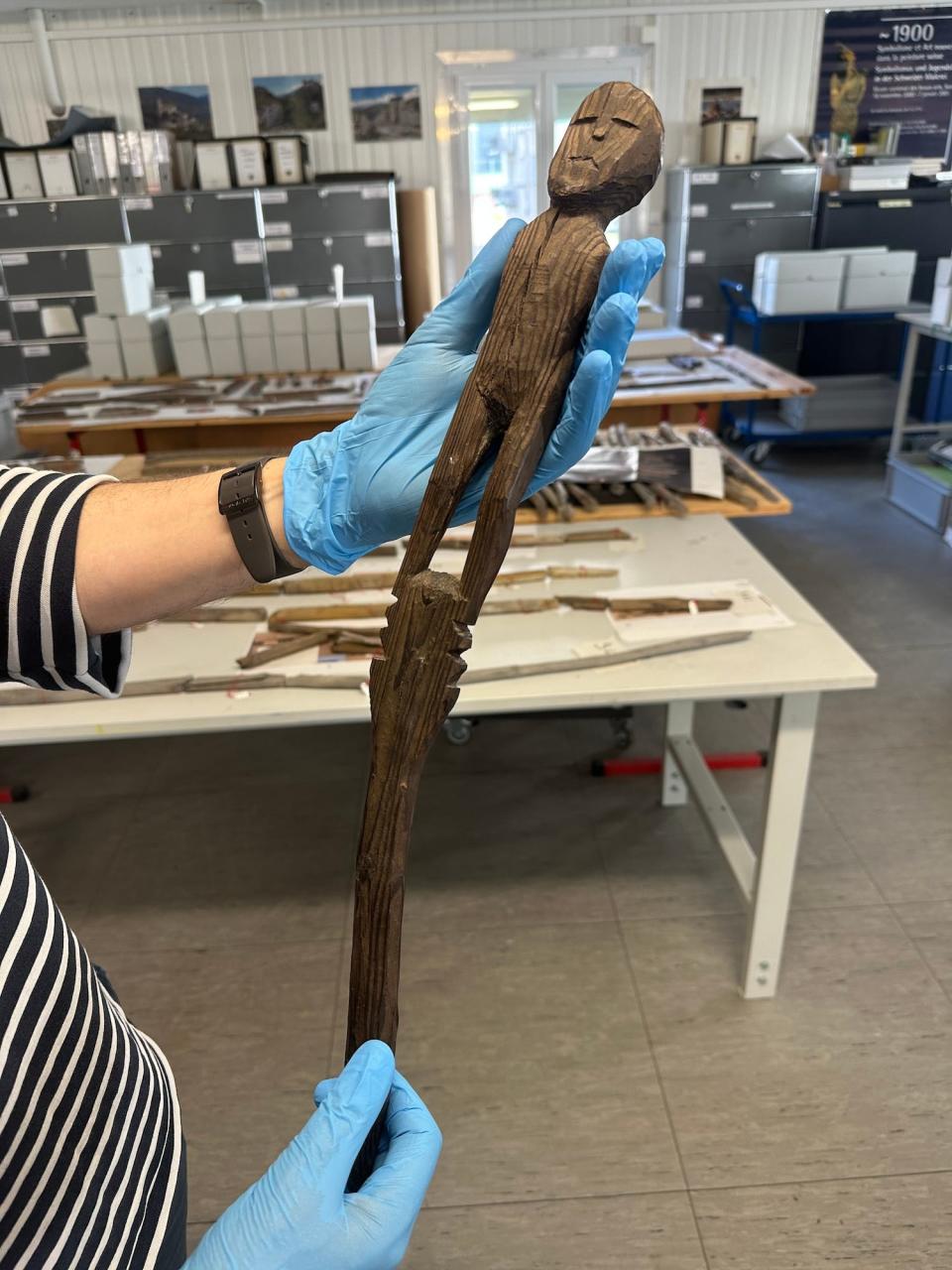
Switzerland has more glaciers than any other European country, and they are retreating rapidly as global temperatures rise. In 2022 and 2023, the country lost 10% of its total glacier volume, according to the Swiss Academy of Sciences.
People who find unique objects on the ice sometimes take them home as souvenirs.
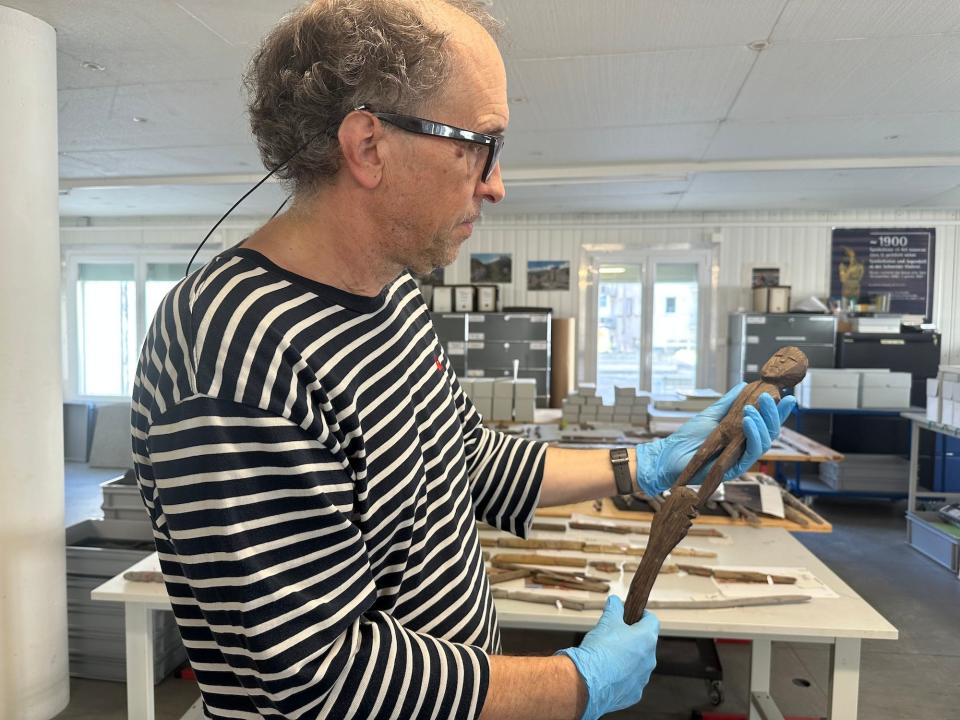

For example, this wooden statue hung on a mountain climber’s living room wall for almost 20 years before museum curator Pierre-Yves Nicod saw an old email about it and contacted him.
The mountaineer found the statue in meltwater in 1999 and cleaned it with modern cleaning agents, but that may have damaged the centuries-old object.
However, after he donated the wood in 2018, archaeologists managed to date it to the first or second century BC: the Iron Age.
As the ice melts and more discoveries are made, archaeologists in the city of Zion are collecting these artifacts for study.
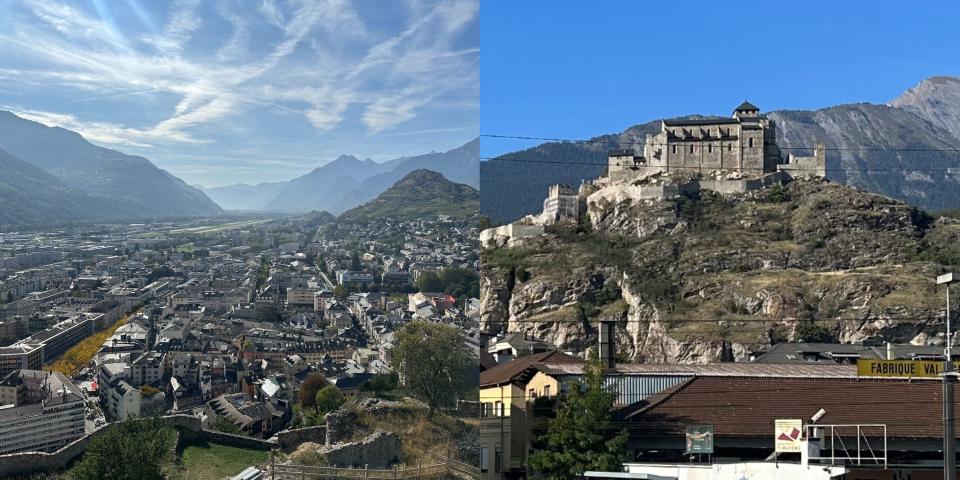

The Valais Historical Museum stands on a steep hill that towers high above the city center. It is at the forefront of the new field of glacier archaeology. The museum has even sent its artifacts on a traveling glacier archaeology exhibition.
The archives, where additional artifacts are stored and studied, are in a separate building in another part of town. Glacial finds are hidden in a giant freezer in the basement and rooms full of bins.
In the museum’s archives, researchers closely study new objects.
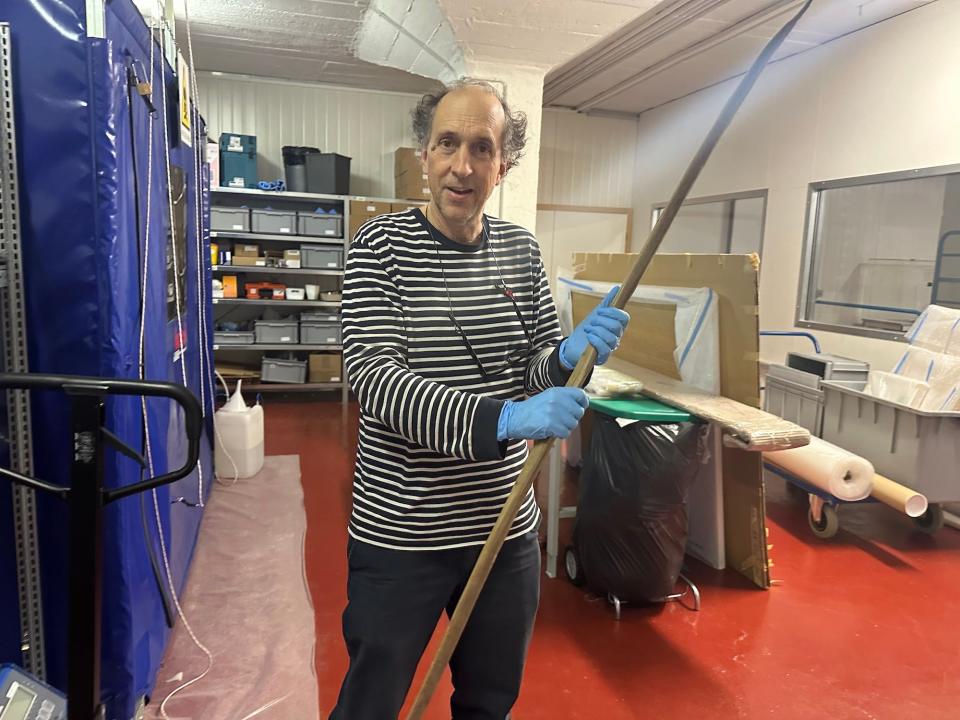

Finds from glaciers reveal more about the human history and ancient economies of the region.
But it’s a challenge. On top of the glacier, there’s often nothing else that has to do with the artifact. There are no structures, roads, ancient cities, or other objects that can provide clues about an artifact’s origin or purpose.
“One of the problems with glacial archaeology is that we find these objects in the ice, and therefore outside of any archaeological context,” Nicod said.
Business Insider spoke with Nicod in French and translated his words into English.
Some discoveries are a complete mystery, like these sticks.
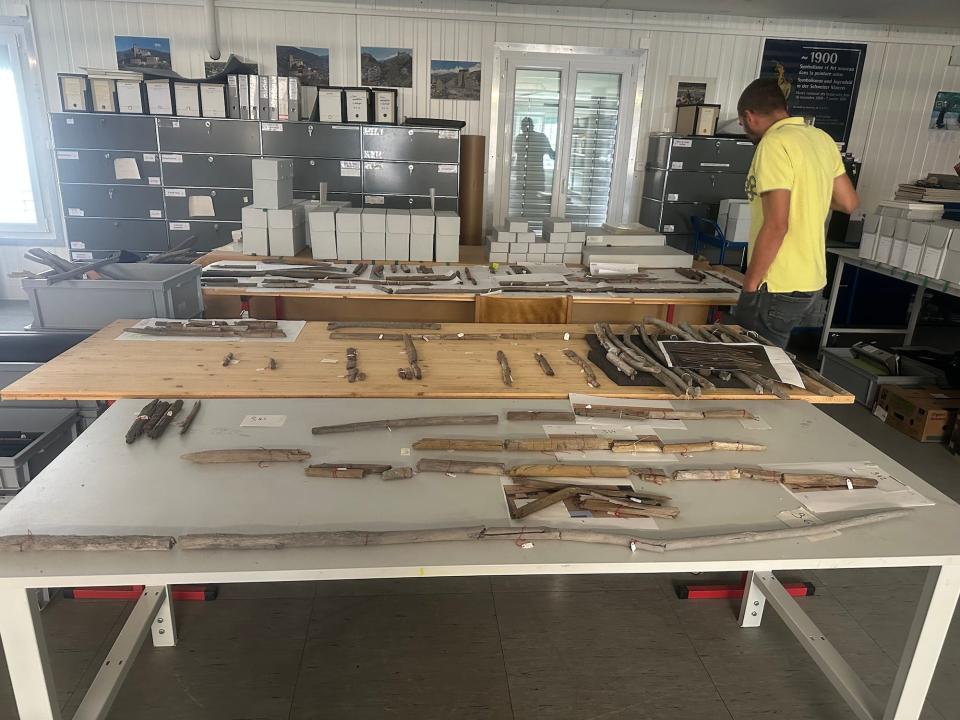

All of these poles come from the same pass, or “col,” between mountain peaks. Because it is well above tree line, the poles would not be there if people had not brought them.
Some of the sticks date back to the time of the ancient Romans, who used the Celts as guides over the glaciers and through the Alps, Romain Andenmatten, a local archaeologistsaid. He thinks the Celtics used sticks to mark the passage.
But the archaeologists were still carbon dating the sticks, and they continue to find more sticks each season when they visit the glacier.
“We go back, we go back, and we still find wood,” Nicod said. “This is really an investigation in progress.”
Archaeologists still do not know what the small wooden statue was used for.
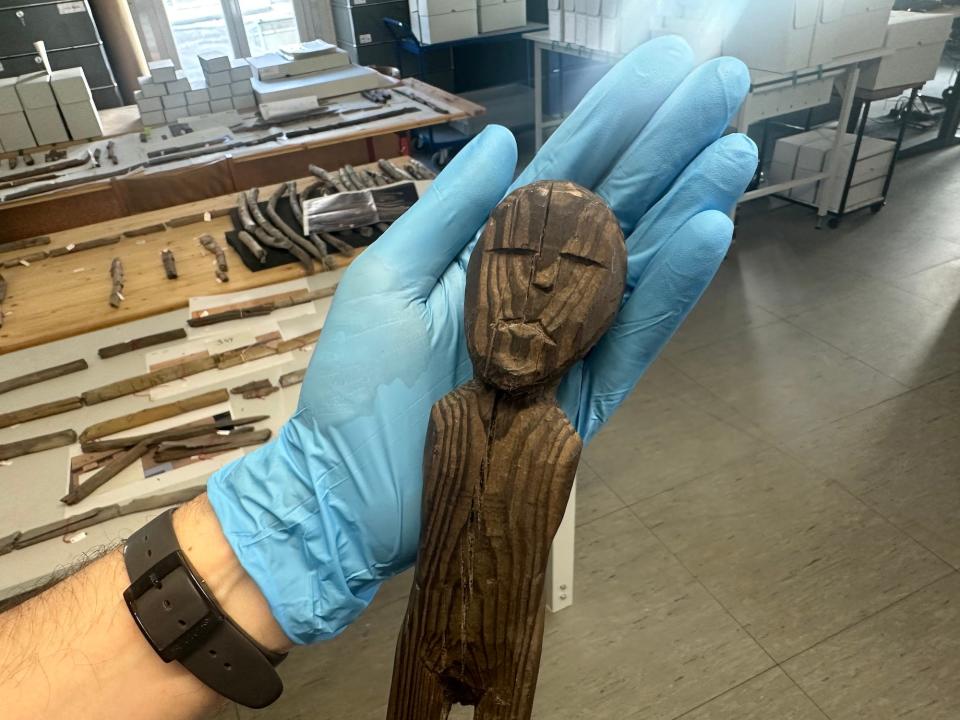

Nicod speculated that when people walked over the pass, they placed this object there for “divine protection.” Or perhaps it marked a boundary. Maybe someone simply lost it during their long mountain trek.
Like the statue, many glacier artifacts are made of organic materials such as wood, plant matter, and leather. These materials do not survive well at lower elevations where they are not frozen.
This means that artifacts like these are not common in archaeological digs. They have no analogues in ancient cities or tombs — places that provide the context for figuring out an item’s purpose.
In the case of this statue, Nicod said, “We have no comparison material.”
Other discoveries, such as these valuable possessions of a 17th-century man, shed light on the economy of the ancient Alps.
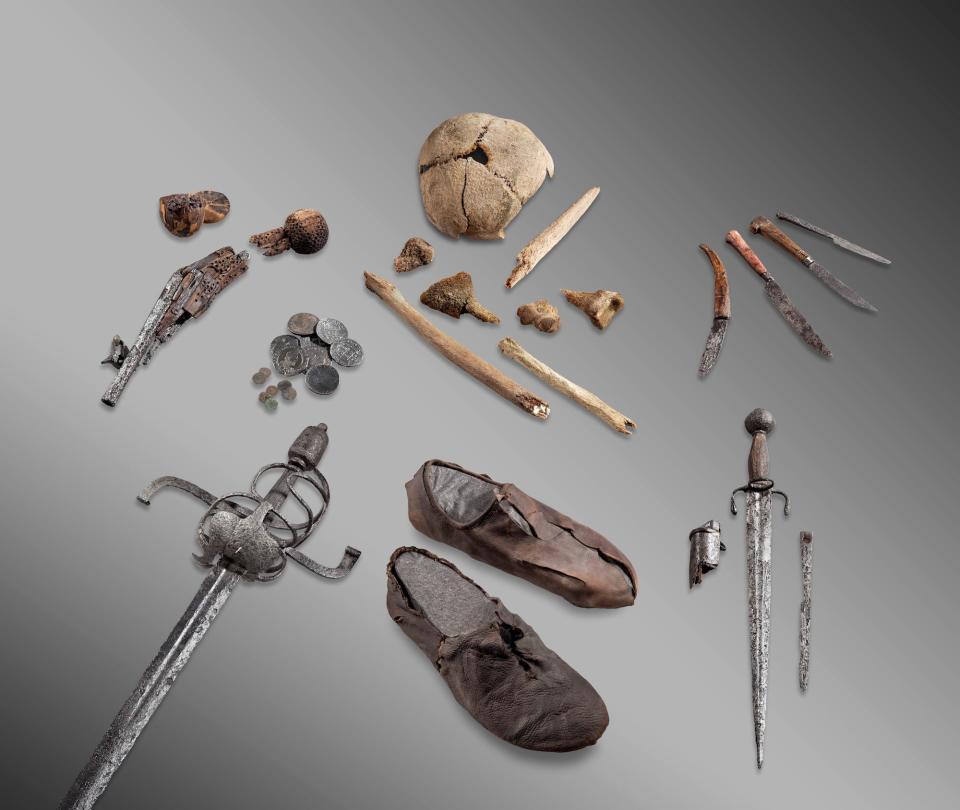

Archaeologists believe they have solved the mystery of this wealthy traveler.
Based on his fine clothing, coins from northern Italy and weapons from present-day Germany, archaeologists believe he was a merchant. Two mules, the remains of which were found nearby, may have transported his goods.
Archaeologists suspect that the man died in an accident, for example by falling into a crevasse.
It is a remarkably detailed snapshot of an ancient economy that stretched across the Alps. For centuries, people have braved treacherous mountain passes and glaciers to reach settlements on the other side of the mountains.
Some artifacts could transmit long-extinct diseases, such as the Black Plague.
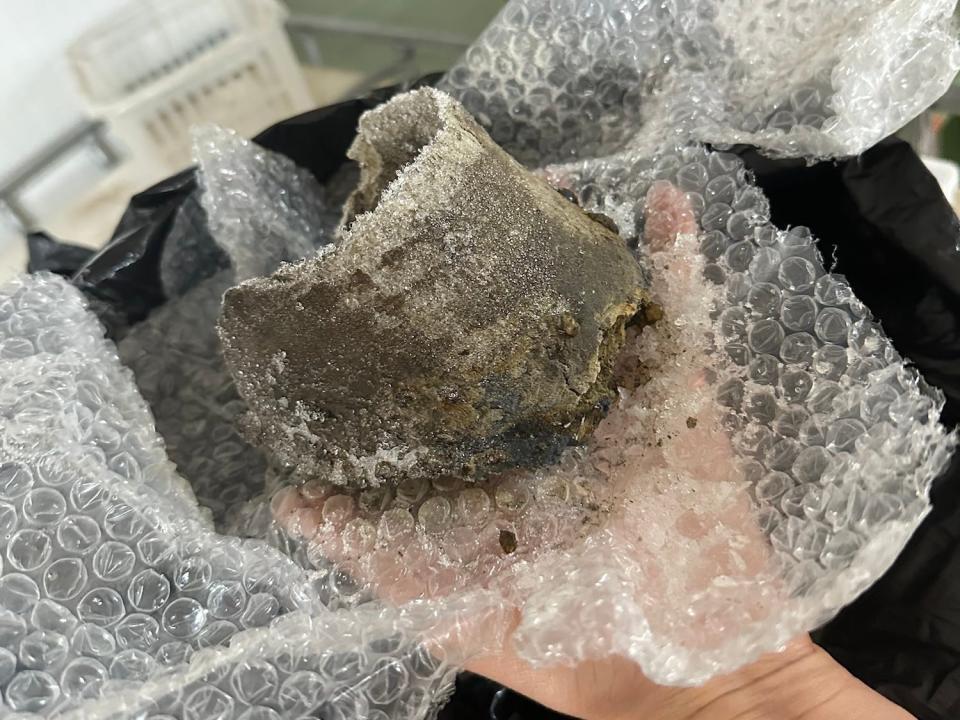

Archaeologists should be careful and wash their hands after touching animal or human remains, as these remains may carry viruses or other microbes that are still viable because they are frozen.
Researchers have previously found active viruses frozen in Tibetan glaciers and Arctic permafrost, tens of thousands of years old. Those viruses were prehistoric and adapted to plants or amoebas, but there are also more recent, human-adapted pathogens like the plague or smallpox that could easily be preserved in ice.
There are remains in the Alpine glaciers from the Middle Ages, including the height of the Black Death. Andenmatten told BI that the Valais archaeologists had not had infections from ancient microbes, but he said he did not want to become an “archaeological experiment.”
“We know that they have problems with this in other regions as well,” Andenmatten said.
In 2016, for example, thawing permafrost in Siberia released anthrax, infecting dozens of people and killing one child.
Nicod is convinced that this wooden artifact is a handle for some kind of tool. It fits perfectly in his hand.
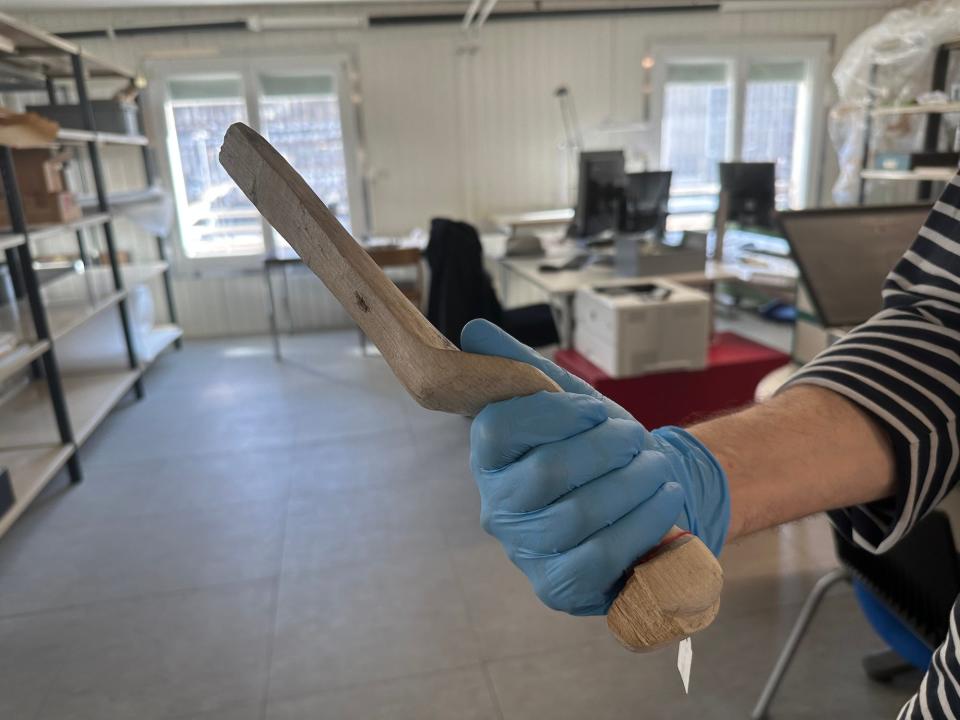

It is from the Iron Age. Nicod suspected it was the handle of a hooked knife for cutting back plants. Whatever it is, it is immaculately preserved.
“These are exceptional wooden objects that would have been destroyed elsewhere,” he said.
Many objects are vulnerable once the ice around them melts. Archaeologists must hurry.
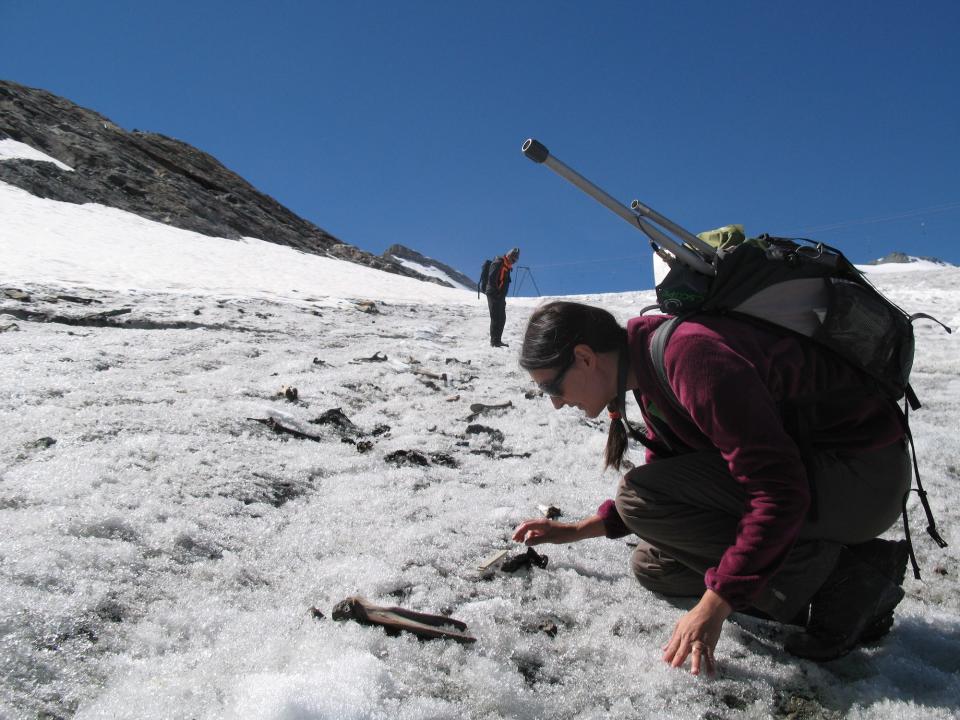

Once leather and other organic materials melt and reach the surface of a glacier, they can be destroyed by the elements and meltwater within two years, Andenmatten said.
For example, some of the wooden poles of Col Collon had mold growing on them. In glacial archaeology, that’s an emergency. They had to dry the wood as quickly as possible and then put it in an oxygen-free chamber for a few weeks to kill the mold.
“You have to react quickly, and that is problematic for the archaeology of the glaciers,” Andenmatten said.
To save as many objects as possible, the archaeologists have developed an app that allows hikers to report their finds.
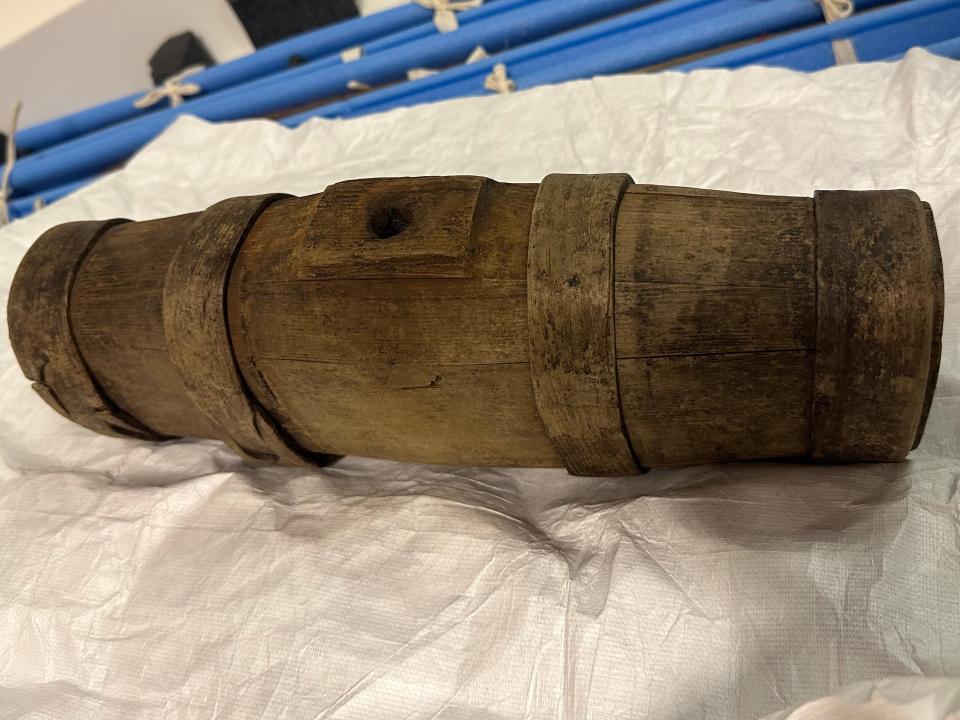

The IceWatcher app is an example of a growing form of citizen science, where researchers recruit enthusiasts to help them collect information in the field.
Hikers reported about 30 discoveries on the app in the first two years, Andenmatten said. About half of those discoveries were recent human remains or old bombs, which became the responsibility of police, while the rest were interesting finds for archaeologists, he said.
Some objects that melt are not found until they have already decomposed.
“We call glacier archaeology looking for a needle in an iceberg,” Andenmatten says.
“I think citizen science is a good solution,” he added.
Read the original article on Business Insider